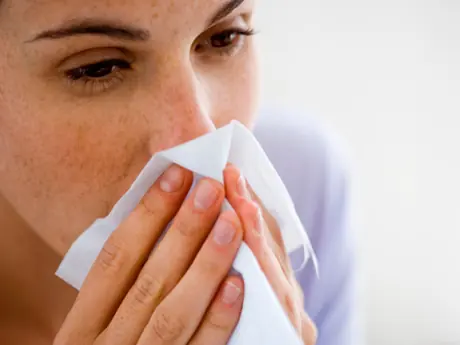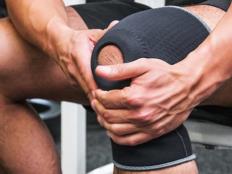
If you're feeling under the weather, exercise may be the last thing you feel like doing—and it's true that when your body's already under a lot of stress, making it do more work isn't always a good idea. But in some cases, light to moderate activity may actually help you feel better, says Richard Besser, MD, chief health and medical editor at ABC News and author of Tell Me the Truth, Doctor: Easy-to-Understand Answers to Your Most Confusing and Critical Health Questions.
First, Besser says, use the "neck rule": If your symptoms are above the neck—sneezing, sinus pressure, stuffy nose—then breaking a sweat is generally considered safe. Listen to your body, and consider the following best (and worst) workout options.
Health.com: Is It a Cold, Allergies, Or a Sinus Problem? Use This Chart to Find Out
Best: Walking
Having a cold may compromise your energy levels, so you may not feel up for intense physical fitness. But even just a 20-minute walk can help you reap the benefits of regular exercise, and it may help improve your cold symptoms, as well.
More: Walking for Weight Loss 30-Minute Workout
"If your sinuses are plugged up, walking will stimulate you to take deep breaths and can help open up those passages," says Besser. (Of course, if you discover that walking—or any type of physical exertion—makes you feel worse, rather than better, stop and focus on getting rest, instead.) Although there's little research on how exercise can affect the duration of a cold, studies have shown that people who regularly work out tend to get sick less, overall.
Health.com: 10 Ways to Walk Off Fat Faster
Best: Jogging
As long as jogging is part of your regular routine, there's no reason you need to skip it just because of a mild head cold. "My patients who are runners all say that running helps them feel better when they're sick," says Andrea Hulse, DO, a family practitioner (and runner) in Silver Spring, Maryland. "Running is a natural decongestant, and it can help clear your head and feel normal again."
You can scale back the intensity of your normal run, Hulse says, since your body is already working in overdrive to help fight off infection. And the American College on Exercise recommends holding off completely if you're experiencing flu-like or below-the-neck symptoms, like nausea or vomiting.
Health.com: 10 Ways You May Put Yourself At Risk For the Flu Without Realizing It
Best: Qi Gong
This type of slow, mindful movement is a cross between martial arts and meditation. It's low-intensity enough for days that you don't feel like breaking a serious sweat, and it has been used for thousands of years to reduce stress and anxiety, improve blood flow, and increase energy. (In Chinese medicine, this is known as regulating and healing the body's "chi," or energy force.)
- 1
- of
- 3
Get ACTIVE on the Go


Couch to 5K®
The best way to get new runners off the couch and across the finish line of their first 5K.
Available for iOS | Android







Discuss This Article